ASRock Core 100HT-BD : Bringing HTPCs to the Mainstream Market [UPDATED : Noise Issue]
by Ganesh T S on July 19, 2010 9:34 PM EST- Posted in
- Home Theater
- Arrandale
- ASRock
- Media Streamer
- Core i3
- HTPC
One of the most interesting aspects of the Arrandale platform is the fact that the GPU is integrated in the same package as the CPU. The GPU die also contains the PCIe and DDR3 memory controller. While the main CPU is fabricated in the 32nm process, the GPU die is fabricated in the 45nm process. Placing the GPU and CPU in the same package saves on power and also board costs. The graphics part of the GPU die in the package is an evolutionary version of the Intel G45 IGP. A comparison of the Intel HD Graphics in the Arrandales and the earlier G45 is provided below.

An interesting thing to note here is the availability of dynamic frequency scaling for the Arrandale GPU, which actually lowers the power consumption of the system. A 900 MHz GPU part on a typical Clarkdale system would up the TDP by 15W or more compared to the lowest end Clarkdale with a 733 MHz GPU. On the Core 100 HT-BD, however, overclocking doesn't require any special thermal arrangements. The higher frequencies kick in only when the load on the GPU becomes high.
We had earmarked the Clarkdales as the perfect HTPC platforms earlier this year. This Arrandale offering may actually tempt us to revise our opinions, given the form factor and the power profile. We will cover this in detail in the later sections. In the rest of this section, we will cover the features of the Intel HD Graphics engine, as it relates to HTPC users. Before going into the details, let us take a look at what Intel has improved in terms of video decode and processing in this iteration of their IGP.
DXVA Compatibility
Intel's support for DXVA came in for a lot of criticism during the G45 days. The paranoia inside the company made it impossible for open source enthusiasts to get hold of the special DXVA interface used by Intel. It used to be made available under NDA to various ISVs (Independent Software Vendors) such as Cyberlink, ArcSoft etc. Thankfully, things have been slowly changing for the better. Currently, most applications (except for VLC) are able to take advantage of the DXVA acceleration provided by the HD Graphics engine. The screenshot below gives us a quick idea of the DXVA capabilities of the Core i3-330M in the Core 100 HT-BD. It is interesting to observe that there is no VLD mode for VC-1, but we did observe 1080p VC-1 Blu-Rays play with less than 5% CPU usage on ArcSoft TMT. This just indicates that the interface to full acceleration mode for VC-1 is available only under NDA as of now.
HD Audio Bitstreaming
Right from its debut, the Arrandales have been able to bitstream HD audio from Blu-Ray discs played back through Cyberlink's PowerDVD or ArcSoft TMT. The Core 100 HT-BD is no different. We were able to play back all Blu-Rays with bitstreaming to the AV receiver, as the following screenshots show. In addition, hardware acceleration with Intel HD Graphics shows its class, with low CPU utilization being observed during playback. Despite the red spikes observed in the DPC Latency Checker program, we didn't notice any audio dropouts or stutters in the video.
Using the open source ffdshow Audio Decoder, HD audio can also be bitstreamed out of standalone MKVs and M2TS files. (More on this in the next section)
With the above features, Intel HD Graphics seems to be a winner, and the Core 100 HT-BD could potentially be the utopian HTPC that enthusiasts have been searching for. Is that really the case?
Driver Support - Intel Misses the Boat!
Since the release of the G45, videophiles have been clamouring for the support of 23.976 fps display refresh rate. Intel caved in and released a driver where you could choose 23 Hz in the graphics control panel. Unfortunately, this only results in a refresh rate of 24 fps. While watching videos encoded at 23.976 fps, this results in a small stutter every 40 seconds or so. Most people get past this by setting the refresh rate of their display to 60 Hz. However, dedicated enthusiasts still see this as a major shortcoming of the platform.
Another issue which has remained since the G45 days is the efforts taken to open up the DXVA specifications of the GPU for open source developers. Lot of progress has been made over the years, but full VC-1 decode acceleration remains elusive in applications like MPC-HC or VLC. As we discussed in the DXVA Compatibility subsection, the VC1_VLD mode which is commonly utilized by open source video decoders is absent. However, Intel's marketing team does indicate complete VC-1 decode acceleration. We can only surmise that this is made available for the Microsoft and other ISV decoders to make use of.
The drivers supposedly support advanced deinterlacing, but users do not have as much control over the algorithms used as they have when using ATI HTPC cards such as the Radeon 5xxx series. Noise reduction algorithms are also not transparent to the users. The frequency of driver updates is rather low, and issues continue to remain unaddressed.
If the end user can put up with these iGPU limitations (personally, I can), the Core 100 HT-BD is indeed a very good choice. This will be further elaborated in the next few sections.


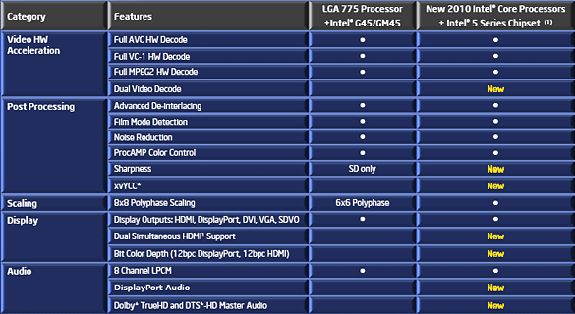
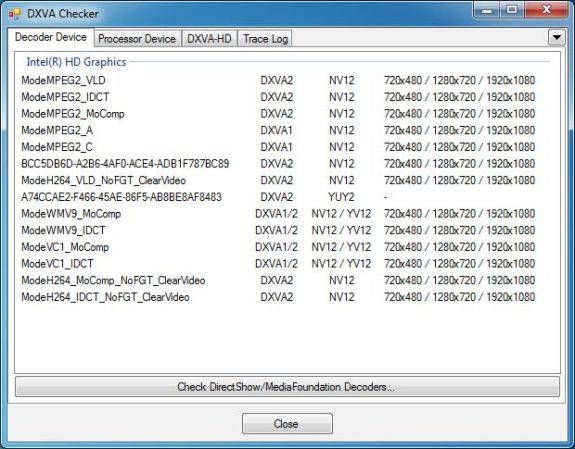
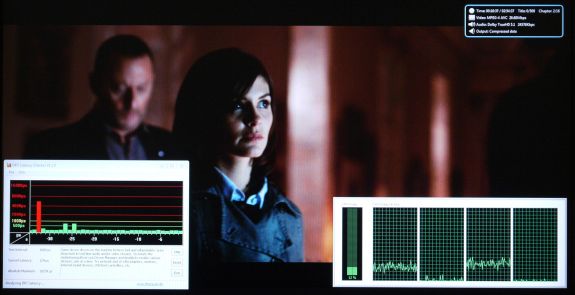
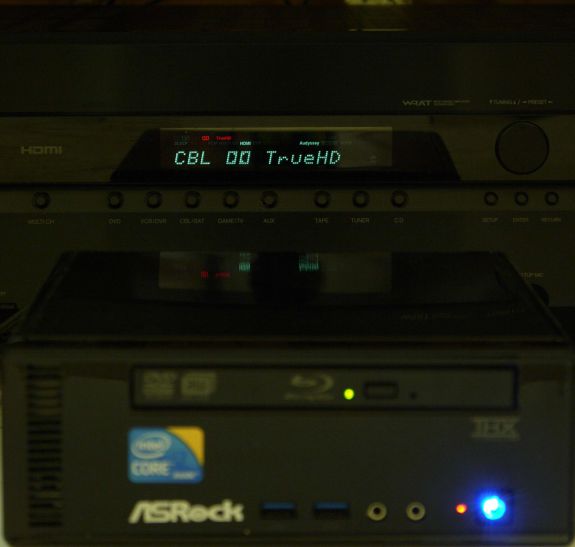
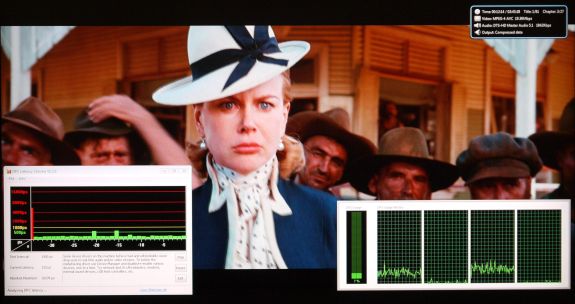
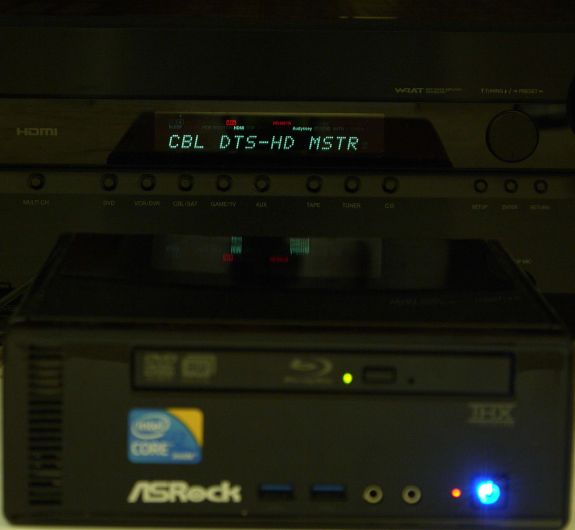








107 Comments
View All Comments
ck_mb - Tuesday, July 20, 2010 - link
Does the video card pass WMC cablecard test? I have a AMD 780G that doesn't, since this motherboard doesn't have any expanision slot it would be worthless as a dvr using cablecards.ganeshts - Wednesday, July 21, 2010 - link
Yes, the system passes the Digital Cable Advisor test without any issues.schoenbe - Wednesday, July 21, 2010 - link
An HTPC without a TV tuner is not an HTPC. It is a media player.In the case of the Core-100HT-BD reviewed here, a powerful media player. But you still can't watch TV with it. You cannot record TV with it. Not even a single channel, let alone several channels simultaneously. Anandtech should not recommend this unit as an HTPC. Besides, $700 for a media player? For playing back BD discs and media files? Not sure who wants to pay this much for an incomplete feature set.
DigitalFreak - Wednesday, July 21, 2010 - link
If you don't like it, don't buy it. Is someone standing there with a gun to your head?EnzoFX - Wednesday, July 21, 2010 - link
In my experience, USB tuners are the easiest for people to work with. This unit is targeted at people who probably wouldn't be willing to open up a computer case and install an internal tuner IMO. Personally, I think the best tuner is the HDHomeRun, which is a network based tuner, so this ASRock unit definitely delivers in every regard.schoenbe - Thursday, July 22, 2010 - link
"... this ASRock unit definitely delivers in every regard." Really? Even if you have to go out and buy a TV Tuner and make it work? This product definitely doesn't deliver the complete package.Ipatinga - Wednesday, July 21, 2010 - link
In the article, there is a part where it says "... One must also take into consideration the cost of the Atheros AR9287, which can be bought for around US $15 online..."Where can I find Mini PCI Express 1x Wireless Adapters (Half Height or not) like this Atheros AR9287 this cheap ($15)?
Thanks :)
ganeshts - Thursday, July 22, 2010 - link
This is the listing I was referring to:http://cgi.ebay.com/Atheros-Dual-Band-AR9287-Wirel...
cjs150 - Thursday, July 22, 2010 - link
Ganeshts: I think you and I have different definitions of noisy. Lets take a simple and real life example.I am listening to classical music - obviously a quiet section, the 1812 overture can be heard over a jet engine!
At same time I have firefox up and running (couple of tabs one of which is of course Anandtech but the other is a chess site I use)
I am also running a chess analysis program, fritz, which will take whatever CPU capacity you through at it
Pretty obviously under this scenario the IGP is not fully loaded but the CPU could be running close to capacity.
My Sofa is 6ft away.
If I can hear the ASRock then it is too loud. By comparison my main work rig (admittedly water cooled), I cannot hear other than possible a very slight noise of air movement.
We all know that manufacturer claims of noise levels are typically overstated (expecially by fan manufacturers) but to be suitable for me the noise (close to the machine) has to be sub 30db or even sub 25db. It is not difficult but does limit the cooling to a slow running 140+mm fan.
Mind you the loudest thing in the living room (apart from my daughter) has to be the cable set up box - but only when it starts up from sleep, some really bad design I think there
ganeshts - Thursday, July 22, 2010 - link
cjs150,Noise is a very subjective issue. What might be noisy to me might be OK to you, or vice versa. It is really hard to say what the "ideal" dB would be (aside from silent of course). Some people seem to have the hearing of a bat, while others are more tolerant.
For the correct judgement, you will have to experience it yourself, unfortunately.
The hobbyist sound meter we used could barely register anything unless it was very close to the unit (as you can see from the photo). At 2 ft away, manufacturer shows proof of 34.5 dB (Please check UPDATE section on Page 11).
I am not even sure there are professional sound meters to measure sub 30 and sub 25 dB unless you have an anechoic room.
The figures are presented, and in our opinion, at this cost and for this form factor, ASRock appears to have done the best it could do. Whether the figures are acceptable to you or not, I can't judge from here :)
Our review of this product was from the perspective of the average HTPC user ( not people with 7 TV tuners, for instance ;) )